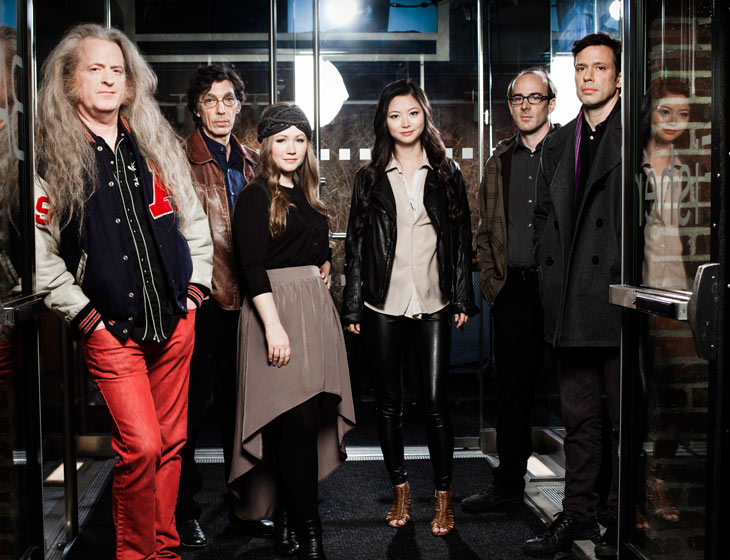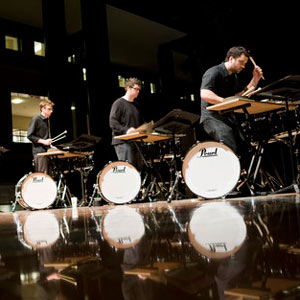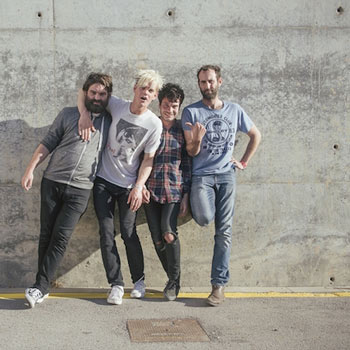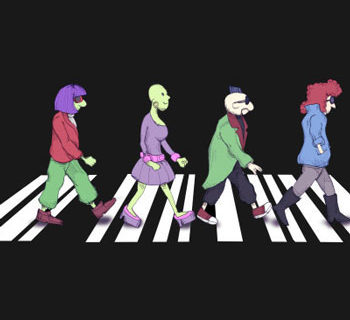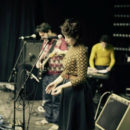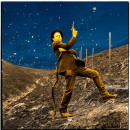Ashley Bathgate saws the strings of her cello with a long wood bow, slicing the air with resonating vibrations. Sharing the stage, Mark Stewart, founding member of the six-person Bang on a Can All-Stars, hunches over his guitar, plucking the high notes, while four more musical accomplices coax ethereal tones from their instruments.
Born from a single-day Bang-on-a-Can marathon concert in a SoHo, New York art gallery in 1987, the touring ensemble has created a sound that seesaws between the humming ambience of a lonely keyboard and the full-on rush of noisy post-punk riffs on an electric guitar. Snatches of classical, jazz, and rock influences also permeate throughout.
In the current stage show, the amplified sextet showcases an 80-minute set consisting of a half-dozen songs. Michael Gordon’s “Gene Takes a Drink,” provides a Steve Reich-like soundtrack inspired by “Gene”—a cat—on a six-minute forage for water through the 9th Street Community Garden on Manhattan’s Lower East Side. The ensemble performs a close-to-the-original rendition of Philip Glass’s “Closing”—featuring Stewart’s delicate guitar work—and Julia Wolfe’s “Believing,” which offers a strong foundation of shifting rhythmic patterns interwoven with breezy psychedelic tones. The tick-tock precision of British composer Steve Martland’s “Horses of Instruction,” induces a collective head-jerk in the audience, who bop in time with the bam-bam beat.
During its recent performance in front of a capacity crowd of 150 people at the Tang Museum on the campus of Skidmore College in Saratoga Springs, New York, the group debuted “Changes, Stops, and Swells”—a new composition by Brooklyn-based Brendon Randall-Myers laden with fierce beats and angry clarinets.
the touring ensemble has created a sound that seesaws between the humming ambience of a lonely keyboard and the full-on rush of noisy post-punk riffs on an electric guitar.
“It’s about being vulnerable and being overwhelmed,” explains Randall-Myers, who attended the world premiere of his composition. “It’s about the things and people that change our lives, how we best remember and chase after those experiences, and find that things are not quite as we remember them.”
For Bathgate, the performance in Saratoga Springs marked her homecoming. The cellist grew up near the venue and graduated from the local high school in 2002, after which her studies took her to Bard College and then to Yale University. Her musical ambitions subsequently landed her in Brooklyn, where in 2008 she joined the group. Hers is the leading voice and instrument in the ensemble’s rendition of Lou Reed’s “Heroin.”
“It’s nothing like the original, but it is the same text,” Bathgate said. “I didn’t grow up with the Velvet Underground. I did this [version] first, and then I heard the original song. It’s an interesting perspective to come from.” The result is terrifying. The song’s lyrical odes to love and death are intensified by a melancholic score and meet at the crossroads where the seductive and the brutal coalesce, and like the ensemble itself, invites all who dare to enter.

